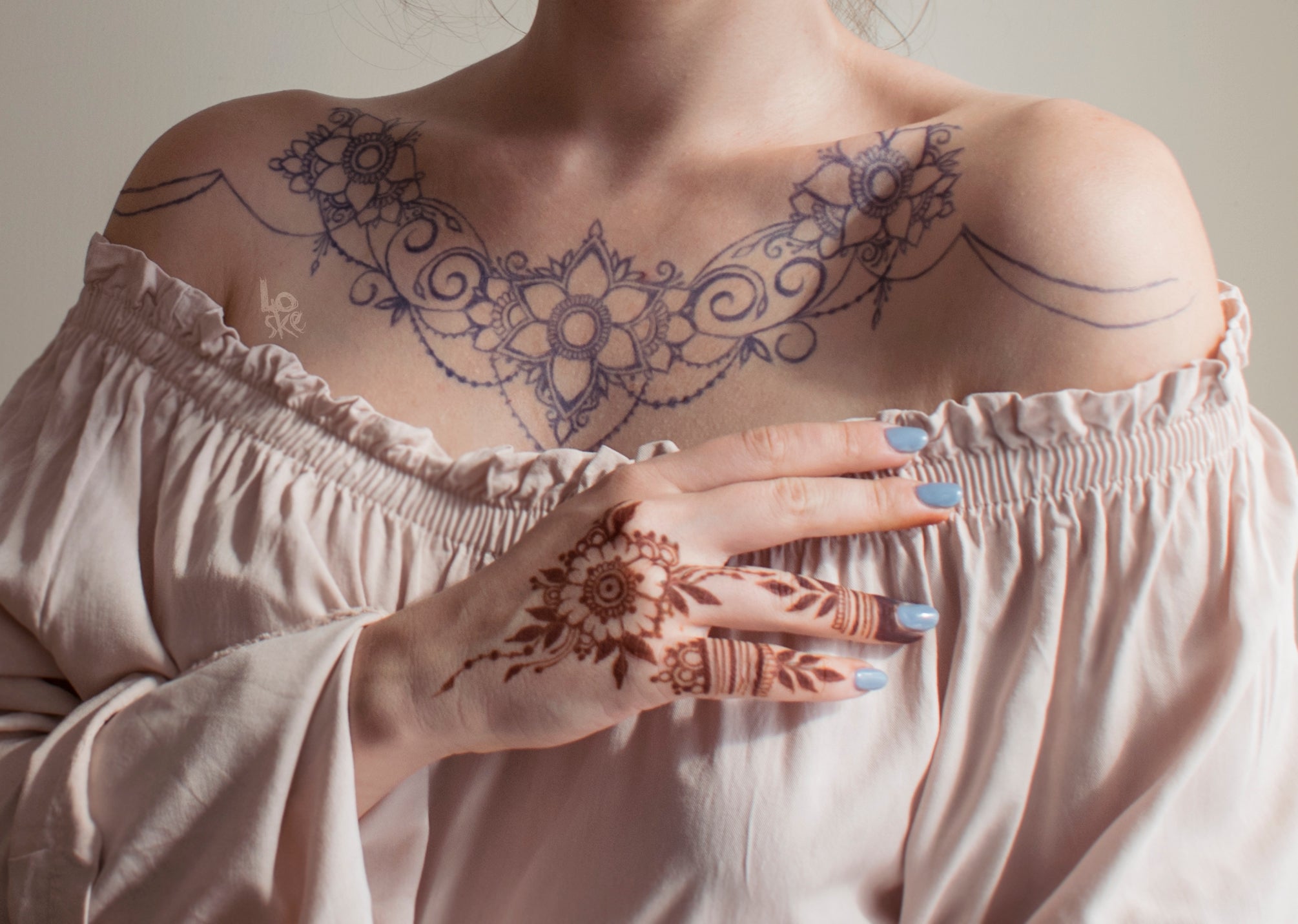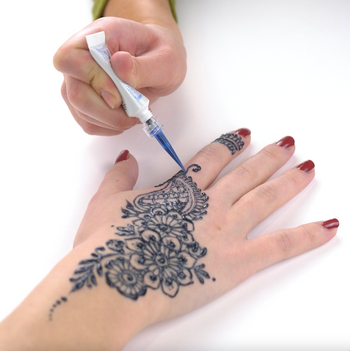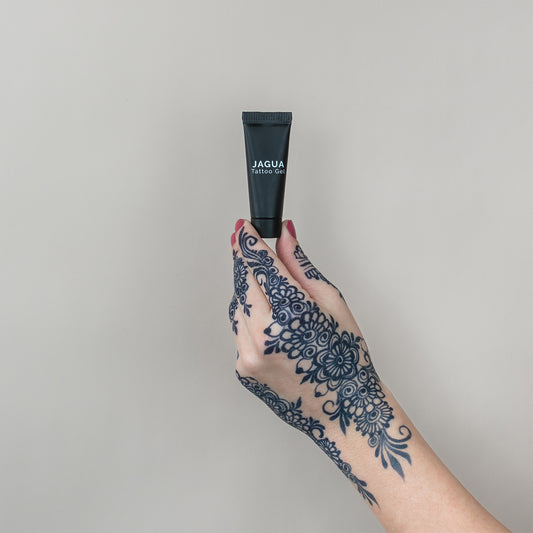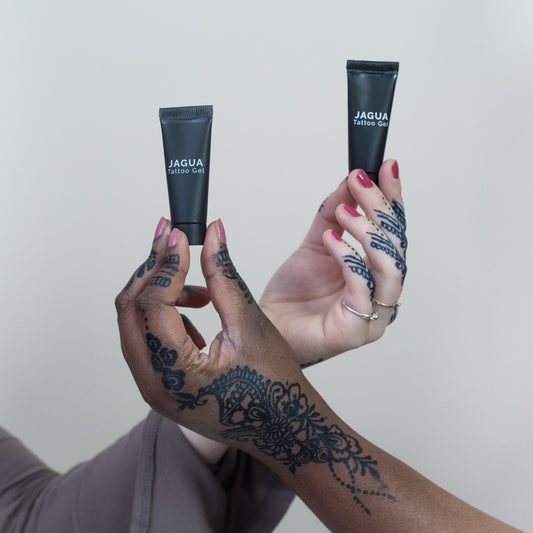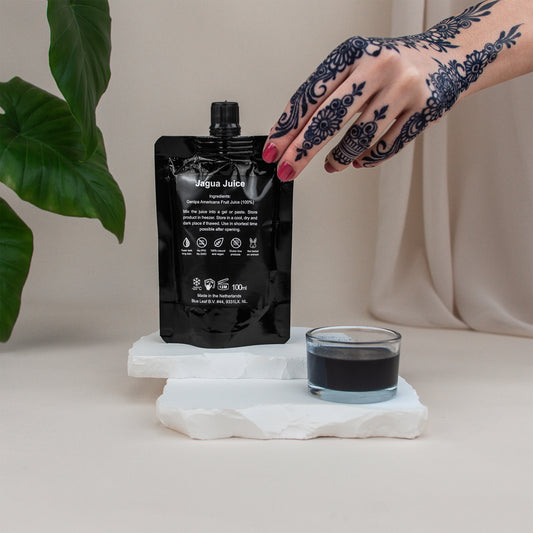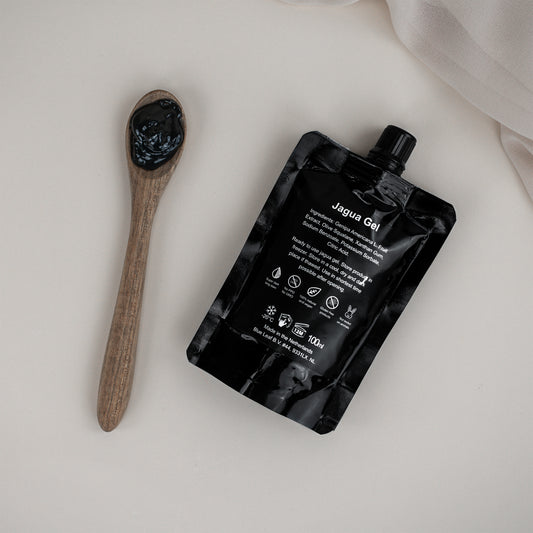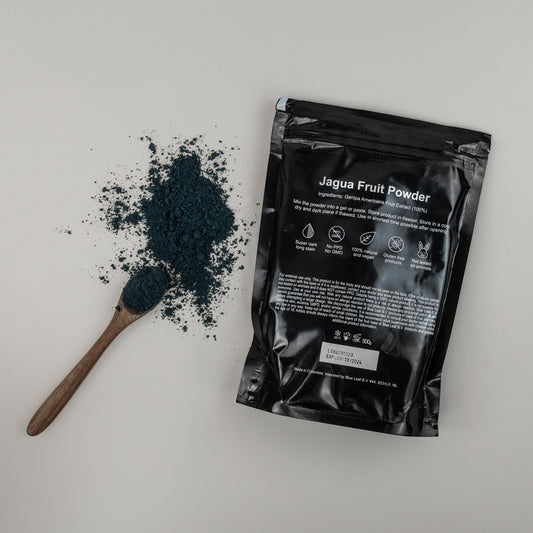Jagua and henna are two prominent natural dyes that have been used for centuries to decorate the skin. While both have a rich history and a unique aesthetic, they differ significantly in their origins, cultural applications, and appearance. In this article, we delve deep into the world of henna and jagua to understand their differences.
Origins
Deep within the lush tropical forests of Central and South America, there's a remarkable tree called the Genipa Americana tree. Its fruit, jagua, is unlike any other and holds a secret. When its unripe juice is exposed to air, it transforms from a clear liquid to a dark blue or black. This unique property made jagua a sought-after choice for temporary body art, creating designs that closely mirror the appearance of authentic tattoos. But the significance of jagua runs deeper than just its visual appeal.
For indigenous tribes in the regions where the jagua tree flourishes, this fruit wasn't merely a source of body art. It bore testimony to their heritage, spirituality, and traditions. Used not just for its aesthetic qualities, jagua became a medium to mark identities, rites of passage, and tribal narratives. The blue-black designs weren't just decorations; they were stories, legacies, and connections to ancestral roots.

On the other side of the world, the warm regions of North Africa, the Middle East, and South Asia offer a different tale, one painted in shades of reddish-brown. Henna, sourced from the crushed leaves of the Lawsonia inermis plant, has been humanity's companion for thousands of years. When mixed with water, these leaves release a dye that has the ability to leave a temporary but vivid mark on the skin.
Henna's cultural significance is as vibrant as its color. It's not just about beautiful patterns; it's a symbol of joy, prosperity, and life's milestones. From the lively streets of Marrakech to the bustling lanes of New Delhi, henna has been an integral part of weddings, childbirth celebrations, and various festivals. Communities gather, often with music and laughter, as henna is applied in intricate patterns, each design a testament to the artist's skill and the wearer's story.

When we talk about jagua and henna, it's more than just a comparison of two dyes. It's an exploration of human expression across time and space. Through jagua's deep blues and henna's earthy browns, generations have found a way to wear their stories, celebrate their joys, and connect with their roots.
Coloring properties
Jagua typically leaves a bluish-black stain that closely resembles a permanent tattoo. Its deep, rich hue can range from a navy blue to an almost charcoal black, and it looks striking on all skin tones.
On the other hand, henna is famed for its reddish-brown hue. This warm, earthy tone varies depending on the individual's skin type and the quality of the henna used, but the result is typically a range from burnt orange to a deep burgundy.
Jagua is NOT Black henna!
Be aware of products that are called black henna. These products are made of traditional henna mixed with the chemical substance ParaPhenyleneDiamine (PPD), which is dangerous and can cause blisters and scars. Jagua is a natural and safe alternative for individuals who are wanting a dark stained temporary tattoo.
While both jagua and henna offer beautiful temporary ink options, it's the unique color palettes they provide that help you decide which one's for you. So, whether you're leaning towards the cool tones of jagua or the warm vibes of henna, you're in for a treat!
Application technique
Applying Jagua involves using a gel made from the powder or juice of the Genipa americana fruit. Artists use fine-tipped applicators to create designs on the skin. Once dry, the gel is left on the skin for at least 2,5 hours before being washed off, revealing the dark blue-black stain within the next 12 to 24 hours.
Applying henna requires a paste made from crushed henna leaves (often powder) mixed with natural ingredients like lemon juice and sugar. Artists use cones or fine-tipped applicators to create patterns on the skin. The paste is left to dry, and the longer it stays, the deeper the resulting color.
Duration and fading
Both jagua and henna tattoos typically last up to two weeks, gradually fading as the skin naturally exfoliates. The color intensity may vary based on skin type, body placement and aftercare practices. Proper care, such as avoiding excessive water exposure and moisturizing the skin, can help prolong the lifespan of your tattoo.
What should you choose?
Jagua and traditional henna both have great capabilities to create beautiful temporary tattoos. The color of henna is more rooted in culture, which is why it a popular choice for traditional fesitivities. While Jagua more closely resembles a permanent tattoo with its dark color, and is widely used for temporary tattoos. Choosing between these two is a matter of personal preference, so be sure to try both!


